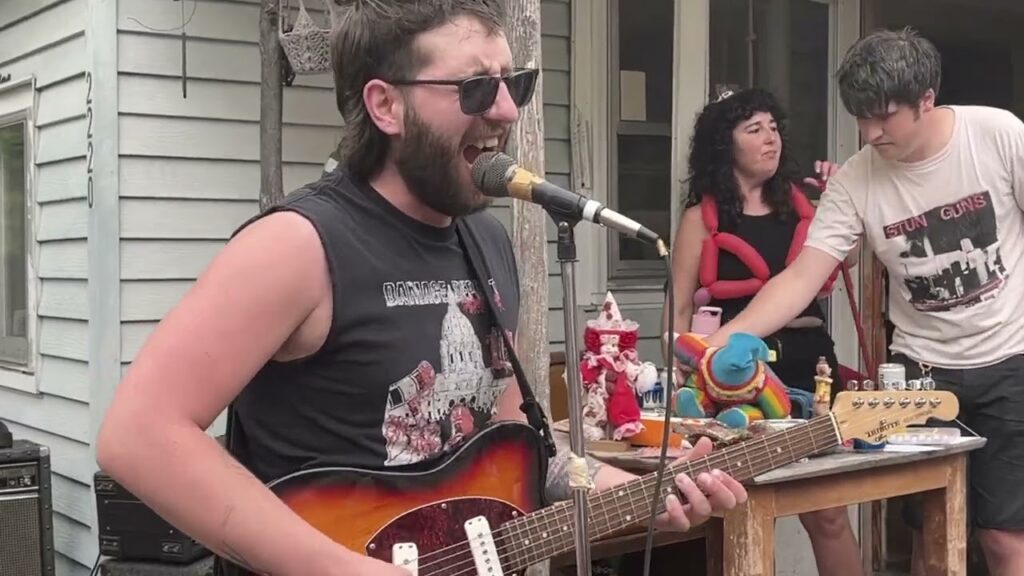
When I was finding my way into worlds of music beyond the Top 40 and classic rock of my hometown, I thought it was immeasurably cool that Ian MacKaye from Fugazi had also been in Minor Threat. Or that Vernon Reid from Living Colour had also been involved in the downtown NY jazz scene. The first hat trick I recall was realizing Erasure’s Vince Clarke had also been in Depeche Mode and Yaz(oo).
I recently encountered jimmy cooper who might have the coolest of triumvirates: writer, singer, and ballplayer. jimmy was unusually kind when reviewing the zine my friend Mike and I publish (and his glowing review of our baseball zine was published in a punk zine, no less). In our subsequent correspondence, I learned that jimmy also fronts a band (Texture Freq) and plays on a punk baseball team (the Southside Serious Hotties).
When we asked jimmy if he’d like to contribute to an upcoming issue he responded, “I’m primarily interested in writing about (positive and gay/trans-) masculinity and baseball as I’ve experienced it.” Sold.
By the time we were mailing out the issue with jimmy’s essay, we’d confirmed with most of the other contributors how many copies they wanted us to send. We were waiting to hear from a couple of people, including jimmy, who wanted extras to share with his teammates. The living room was cluttered—envelopes and office supplies, records, snacks, and beers strewn about the table and floor. During a break in the action, Mike read about a shooting at a punk house in Minneapolis.
Who brings a gun to a house show? I’ve seen my share of dumb things go down at house shows. I’ve been skeezed out by shocking displays of hygienic indifference. I’ve been baffled by how many bands can squeeze onto a bill and how late a show can start, but never weapons. House shows are founded on hospitality, people opening their doors to friends, touring musicians and writers, and congregating weirdos of countless stripes. And was it really a punk house? In the midst of a genuine tragedy, did a misguided journalist see a Green Day poster and misread the setting?
jimmy emailed the following weekend. It turns out August Golden, the person murdered at the show, was jimmy’s roommate and friend. And Nudieland, their home and performance space, well known in DIY circles as a safe haven for queer folk, was the site of the shooting. jimmy’s email had me squinting at the screen through a flurry of anger and confusion. All the reports I read painted the same horrific picture of a transphobic and homophobic hate crime.
A few days later, jimmy shared a video compilation, “A Tribute to Nudieland,” credited to UnderCurrentMPLS, which collected footage from various shows. He wrote, “This is how I want to remember this place.” It’s a celebration, which seemed the best point of entry for a newcomer like me.
“A Tribute to Nudieland” is a head-spinning sprint. 17 bands, 15 minutes. Mostly punk, hardcore, indie rock or thereabouts, and a lot of range within those broad strokes. There are bands sweating through dresses and t-shirts on sunny days, bundled in coats on chilly nights. Sometimes in the garage, sometimes on the back deck. Meanwhile, people are packed together like a rush hour subway car, bouncing and beaming, nodding in affirmation to the righteous monologues.
Over the past few months I’ve been editing an oral history for the Ergs’ upcoming dorkrockcorkrod reissue. I lived too far from their home turf to manage more than occasional trips to turn-of-the-century punk houses like the Souse House (Jersey City) or the Parlor (New Brunswick). Hearing about those scenes two decades later, it’s clear how much the exponential levels of creativity, support, and inspiration meant to people.
Scanning the crowds of Nudieland shows, I wondered to what extent that atmosphere radiated with those in the video and who played which roles in the scene. Who could fill in with any band on a day’s notice or pick up drums for the first time on Wednesday and be ready for a gig by the weekend? Who was always talking about starting a band, but couldn’t get off their ass? Who was generous beyond their means when it came time for buying food or picking up an extra 12-pack or making sure touring bands were taken care of when the donation hat was passed around?
***

I didn’t absorb much of the music initially. I was just trying to make sense of the setting. Stressica cut through, though. Casually pulling on a smoke and standing behind a folding table, Stressica manages the diva’s balance of being aloof and magnetic. She gives her keyboard just enough attention to evoke the sounds that bubble beneath her subdued cover of Dolly Parton’s “Don’t Let It Trouble Your Mind.” And while that description might veer toward the kitschy, I don’t want to oversimplify things. Her 2019 EP, Obituary, a tribute to her friend Corey, steers those elements in a more haunting, ethereal direction, and the EP version of her Dolly cover is even more wonderful.
***

Separation Anxiety posted two songs from their upcoming demo posted on Bandcamp, but they’re listed for $420.69! The songs are really good—fuzzy flannel punk with group sing/chant along backing vocals. They’d be perfect playlist fodder, but four bills? I assumed it was a mistake, an oversight, but a week later the price held steady. It’s fun to speculate about the backstory. I keep coming back to some variation of You should wait until the demo is ready to buy these songs. My friend Brendan said it’s like a small scale version of Wu Tang’s Once Upon a Time in Shaolin, of which only a single copy exists and it last sold for four million dollars. I think four hundred is comparable on the house show circuit. That’s over two hundred bucks per song, about $2500 for a 12-song album. Using artificial scarcity to restore art to Renaissance-era levels of refinement/ elitism? Smartass joke? I’ll probably never know. Score one for Separation Anxiety.
***
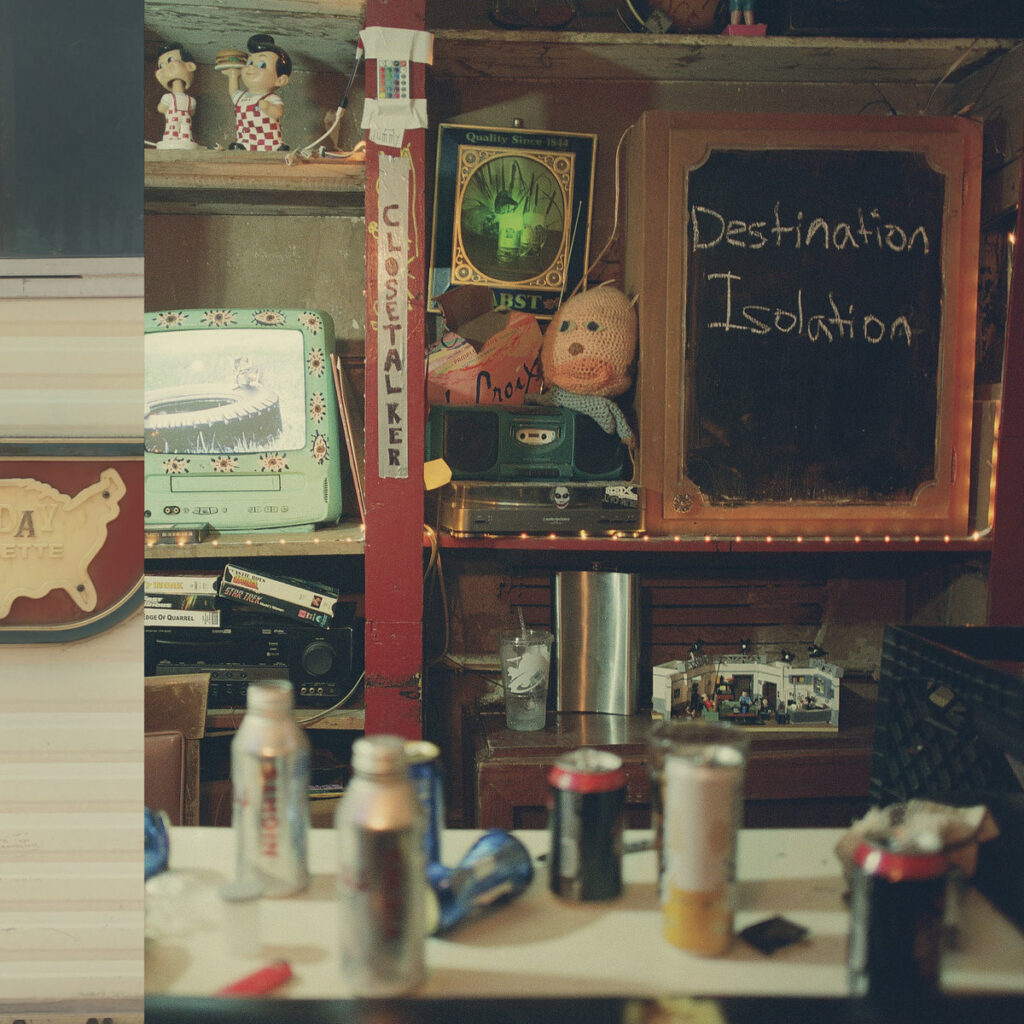
Closetalker gave me a lot to think about even before I dropped the needle on their debut album, Destination Isolation. In the Nudieland video they cover Superchunk’s “Seed Toss.” Later when another band covers Superchunk’s “Throwing Things,” I believe it’s Closetalker’s Avery Taylor who steps into the frame and bear hugs the singer. Then I picked up on the Seinfeld reference in their band name and noticed a Lego version of the Seinfeld set visible on the front cover of the album.
Superchunk and Seinfeld exist in parallel cultural universes, but I liked that Closetalker was pulling them together, however loosely, and figured this was a band I could get with. I charged into the surf of the first track, “Cryptkeeper,” only to run into the opening bassline, which is slow and moody, sludgy and distorted. True to their name, Closetalker grab us by the collar from the outset and get nose to nose. When the rest of the band joins in, I expect them to jump start the song. Instead they linger with those longer, almost dirgey tones. This is no passing thought. They wait until the two minute mark before pushing the pace. Faster tempos move front and center for the balance of the record with shards of icy guitars raining down throughout. The combination reminds me of Hüsker Dü circa Metal Circus but also early Cure or Siouxsie and the Banshees with Spot capturing the magic—a piercing, post-punk vibe that slams into their barreling garage punk. Yet the old school references are mere signposts along the way. Destination Isolation soars above and away from the nostalgia pit. The hooks and noise sit well together with ample vulnerability serving as the glue. Closetalker seem to feel the weight of every lyric. I sense people working on themselves and encouraging others to do the same, voicing the heartache without claiming their struggles rise above anyone else’s—an invitation to share catharsis more than navel-gazing self pity. They may be in our faces, but it’s all good, intense but snug and welcoming, like that bear hug in the video.
The album title, Destination Isolation, looms large, too. Is loneliness inevitable? Is making music with friends enough to pull you out of the nosedives? Many of the lyrics lean toward pessimism, but not exclusively and taken as a composite they’re resilient. Take “Front Door Schemin’,” which starts like this:
“Anxiety’s reached its peak/Now it’s time to run and hide”
But lands on this promise:
“Speeding cause I’m coming back for you”
A former coworker used to talk about the difference between venting (taking turns to air grievances and moving on) and complaining (looping the same gripes, monologuing without listening). Destination Isolation is a healthy vent session, electrifying and unifying, translating the intimacy of a house show to vinyl.
***
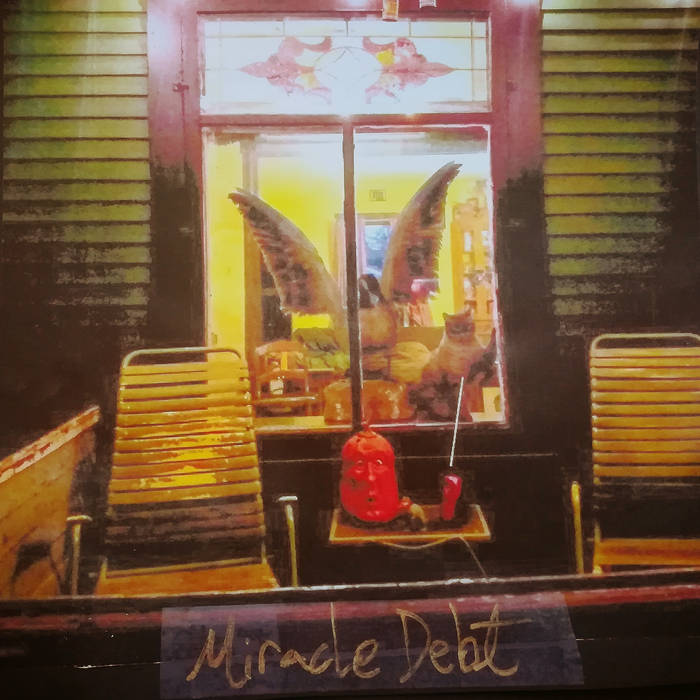
One time on tour in Lexington, Kentucky, my band played a club show to a single digit crowd—the joint was empty except for the other band, the bartenders, and a guy I’ve come to think of as Lexington Lou. He wore denim, work boots, and tucked in his flannel. He sat at the bar, nursing shots all night, and thumbing through the paperback carefully placed next to his shot glass. I want to say he was reading Steppenwolf or something of comparable heft. He kept to himself until one of my bandmates struck up a conversation. Then he opened up, talked about the Hermann Hesse novel and joked around. He had this easy, inviting sense of being really together, but also a subtle, unspoken edge, not unwelcoming or off putting, but there was something unsettled burning inside. We ran into him the next morning at a diner. Same paperback, same aura.
I have some sense of what Miracle Debt’s singer/guitarist, Forrest Hittle, looks like from the Nudieland video. But when I listen to Miracle Debt, Lexington Lou still finds his way into my field of view, which is ironic because Forrest sounds to me like Rick Rizzo from Eleventh Dream Day who also has Kentucky roots. And while I hear shades of Eleventh Dream Day, others might hear the Replacements or other possible influences, which is to say Miracle Debt tap into traditions. They don’t just cop other band’s moves so much as slather on thick coats of their own take onto those familiar canvases. Like Closetalker, they beg the question, among others, of how much tension you can pack into a song while retaining melody and heart. Creep too slow and you risk the former. Move too fast and you cash in the latter.
Miracle Debt’s melodic angst punk offers a lot of stomp and stirs in a bit of twang. There’s also a deceptive Lance Hahn/J Church concision in play with ten songs in only eighteen minutes. The songs are short but still fully developed, multi-dimensional. I think that’s partly the writing and arrangements and also the way the rhythm section moves with such strength and grace.
The lyrics hit home with lines like these from “Homesick Gift”:
“So if there’s not a forever that we could call ours
When the faces are gone, keep some noise in your heart
And it might be how we hold on to each other”
And “Harsh Corners,” a spot-on kiss off to Confederacy apologists and adjacent haters/ racists:
“Your grandfather died alone
From the hate that filled his bones
So they built a monument to his worthless love
With his anthems deflated and causes lost”
is driven by a rhythm section that can circle around beats as much as push them, relentlessly active but never busy. Miracle Debt works wonders at maximum volume for daylight plays and also, paradoxically, turned down for the closing sounds of the day. So, so good.
***
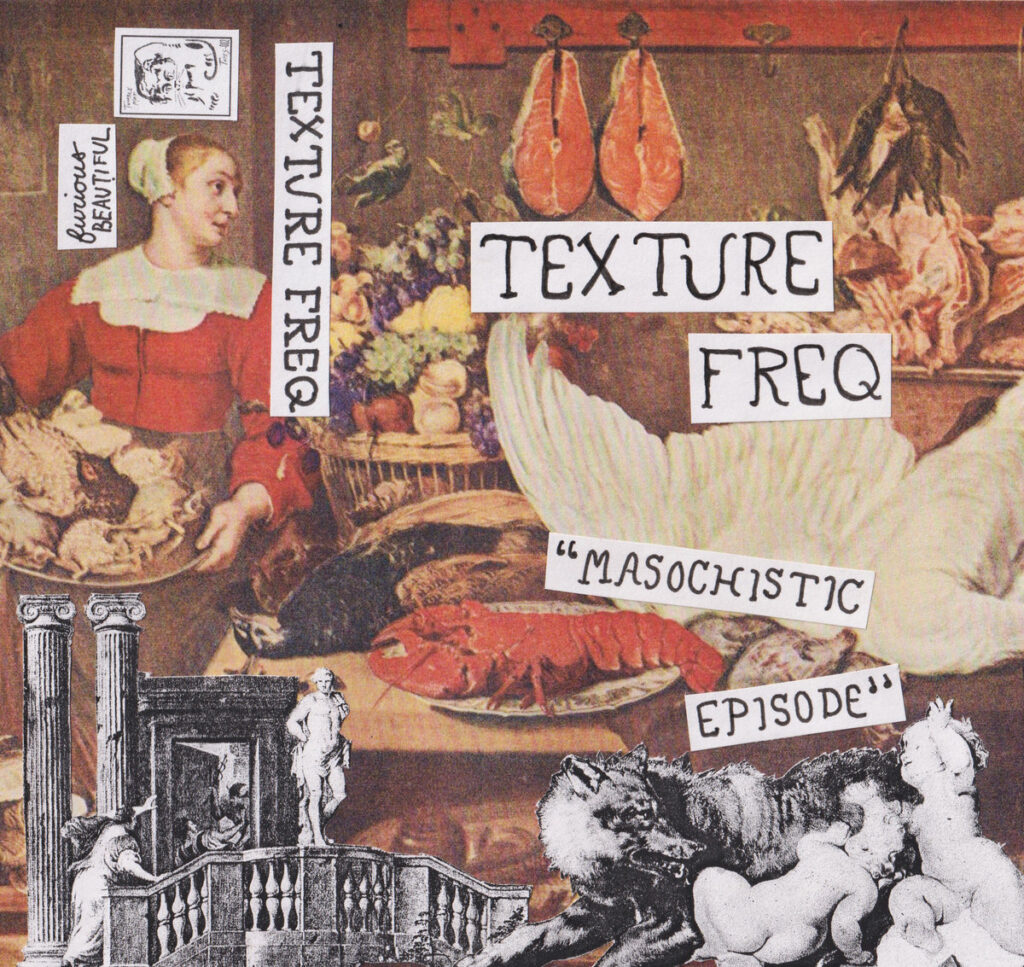
Which brings us to Texture Freq with jimmy cooper on vocals. The title of their debut cassette EP, Masochistic Episode, reminded me of Hüsker Dü’s “Masochism World.” The Hüsker’s song is the flipside to their cover of the Byrds’ “Eight Miles High.” The a-side reset what I thought about ‘60s rock’n’roll and punk, strapping the Byrds song to a supersonic rocket ship and setting course for the sun and beyond. But the b-side, “Masochism World,” sent me scurrying in doubt and fear. All I heard were waves of menacing cacophony, which eclipsed the melodies and rhythms, to say nothing of the lyrics. Texture Freq launch themselves somewhere in the great divide between those extremes, and leave no doubt as to the meaning of their lyrics courtesy of jimmy’s accompanying deep dive zine, The Immediate Stages of the Hardcore Singer.
The band plays fervently, guitars often hugging the shoreline sketched out by the bass and drums, doubling, sometimes tripling, the impact. Other times the guitars wail and sail on open seas, which is remarkable because songs this fast and tight don’t leave much room to roam, but Texture Freq create and maximize the space, especially the title track and “granite head.” Thunder rumbles in the rhythm section and melodic guitar lines zig and zag along the top of the mix. Meanwhile, jimmy’s voice slices through the maelstrom, a commanding presence, shredding and shrieking, delivering dense lyrics. It’s hard to decode those lyrics as the songs wash over, hence the zine.
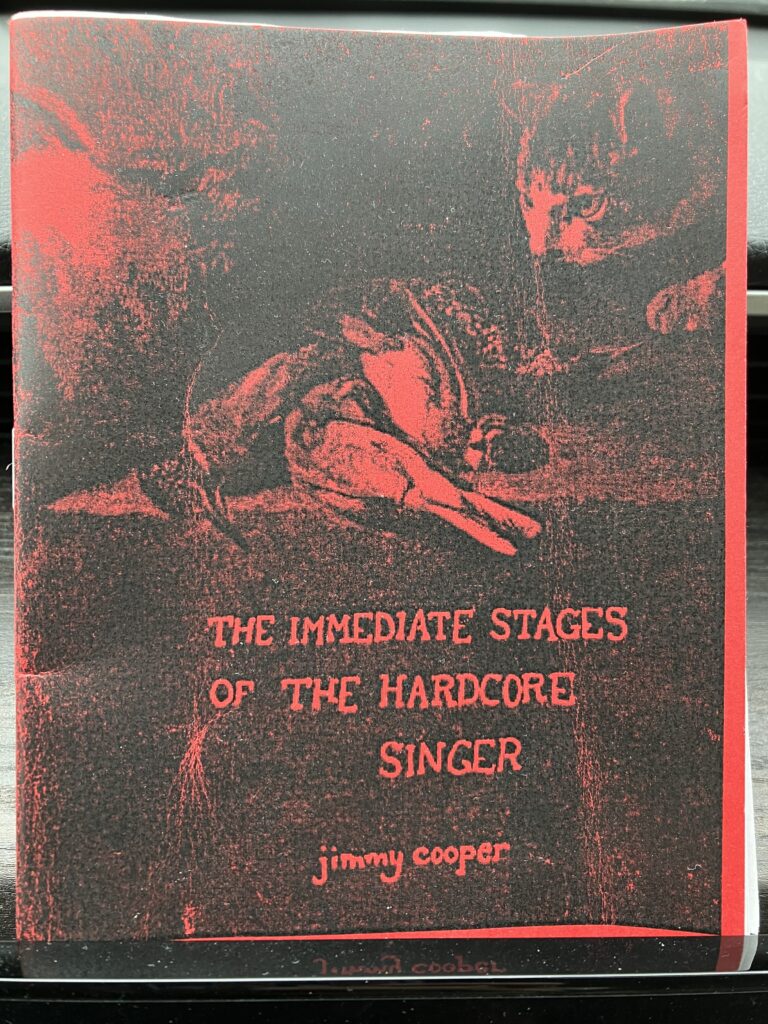
The Immediate Stages of the Hardcore Singer delves into jimmy’s evolution as writer and gay/trans man. His style is uncommonly precise and intellectual, but also too personal to be academic. His pursuit of self knowledge in the context of hardcore puts the genre in a new context for me. Hardcore seems so much about being direct, literal, and visceral, not always the place for contemplation and nuanced thinking. But jimmy says being in Texture Freq allows him to “express more than I could ever say…performing at the brink of my body’s capabilities, (which) is what I seek, what I need” and how “punk feels best as an opening into oneself shared amongst the crowd.” The thinking and consideration fuel the preparation, the writing. The furnace blast performance is rooted in the consideration, but also stands–and pushes and defies and punches–on its own. Texture Freq seem to draw equal strength from both strands and all that lies in between.
I can’t claim to carry all of that when I listen to the EP, but the songs are only part of the picture and that’s why I keep the zine–equal parts memoir and lyric sheet–nearby when I go back to Masochistic Episode. I wonder if Texture Freq have a concept record in their future. I’m curious to know what it’d sound like to wrap these ideas and sonics into a narrative.
***
And that’s just for starters. The Nudieland tribute also introduced me to Claire’s Girlfriend, King Baddog, and Despondent, among others. My favorite moment comes from the last band, Scrounger, with August singing and strumming. As the trio approaches the end of the song, the drummer, Morgan, drops out early (or maybe it was August and the bassist that went long—why’s everyone always assume it’s the drummer?). Morgan flashes a knowing smile and jumps back in. There’s so much warmth and acceptance in that snapshot. For all of the work that went into building the band and songs, the friendship transcends.
Everyone I spoke to for the Ergs oral history is still active creatively—playing in bands, booking shows, writing, dancing, opening their own stores. I hope we keep hearing from the Nudieland voices for years to come, too.
If you have the means, consider donating to help those closest to August and most impacted by this tragedy: Nudieland/GoFundMe.
Thanks to jimmy cooper, Michael Fournier, Todd Taylor, and Forrest from Miracle Debt.
Image: Closetalker @ Nudieland, still taken from UnderCurrentMPLS
Follow Vol. 1 Brooklyn on Twitter, Facebook, and sign up for our mailing list.
